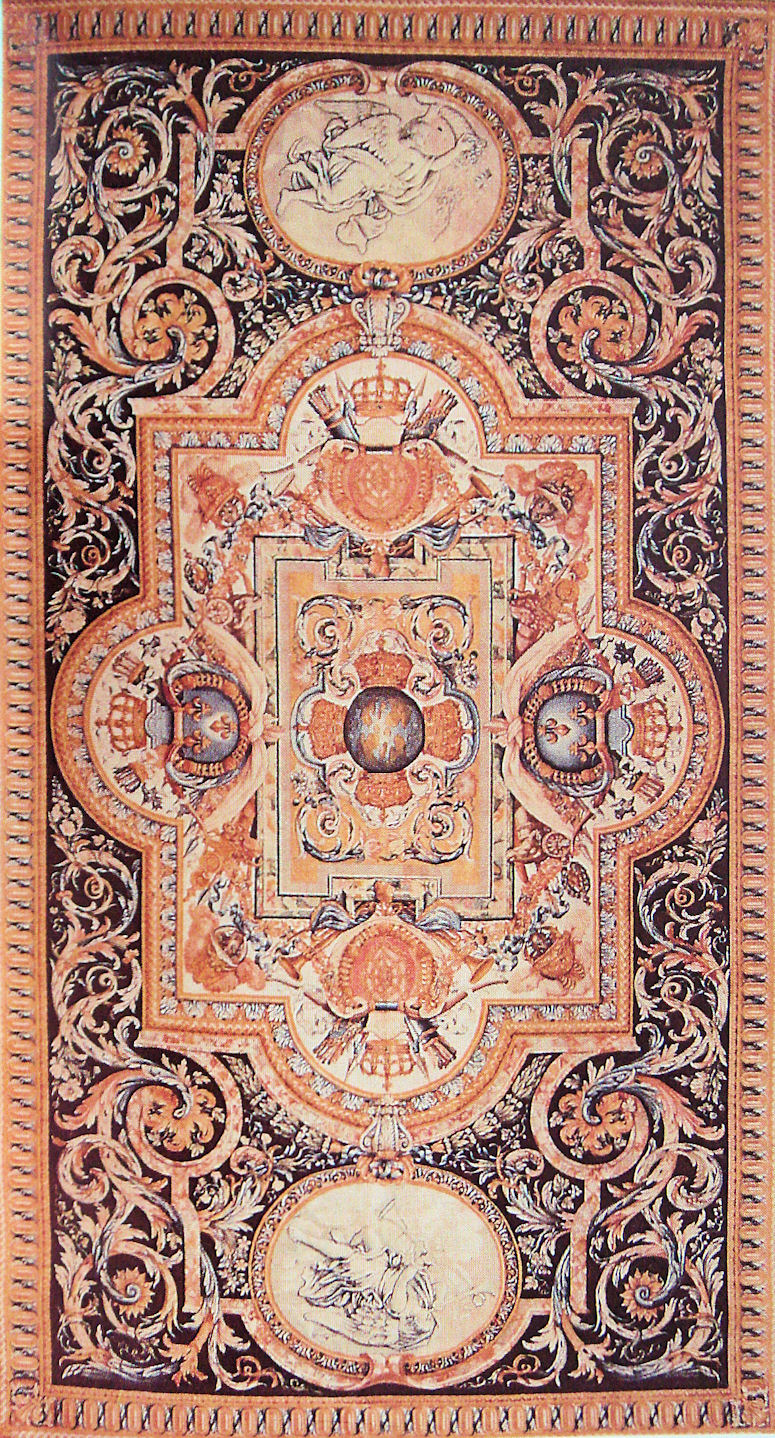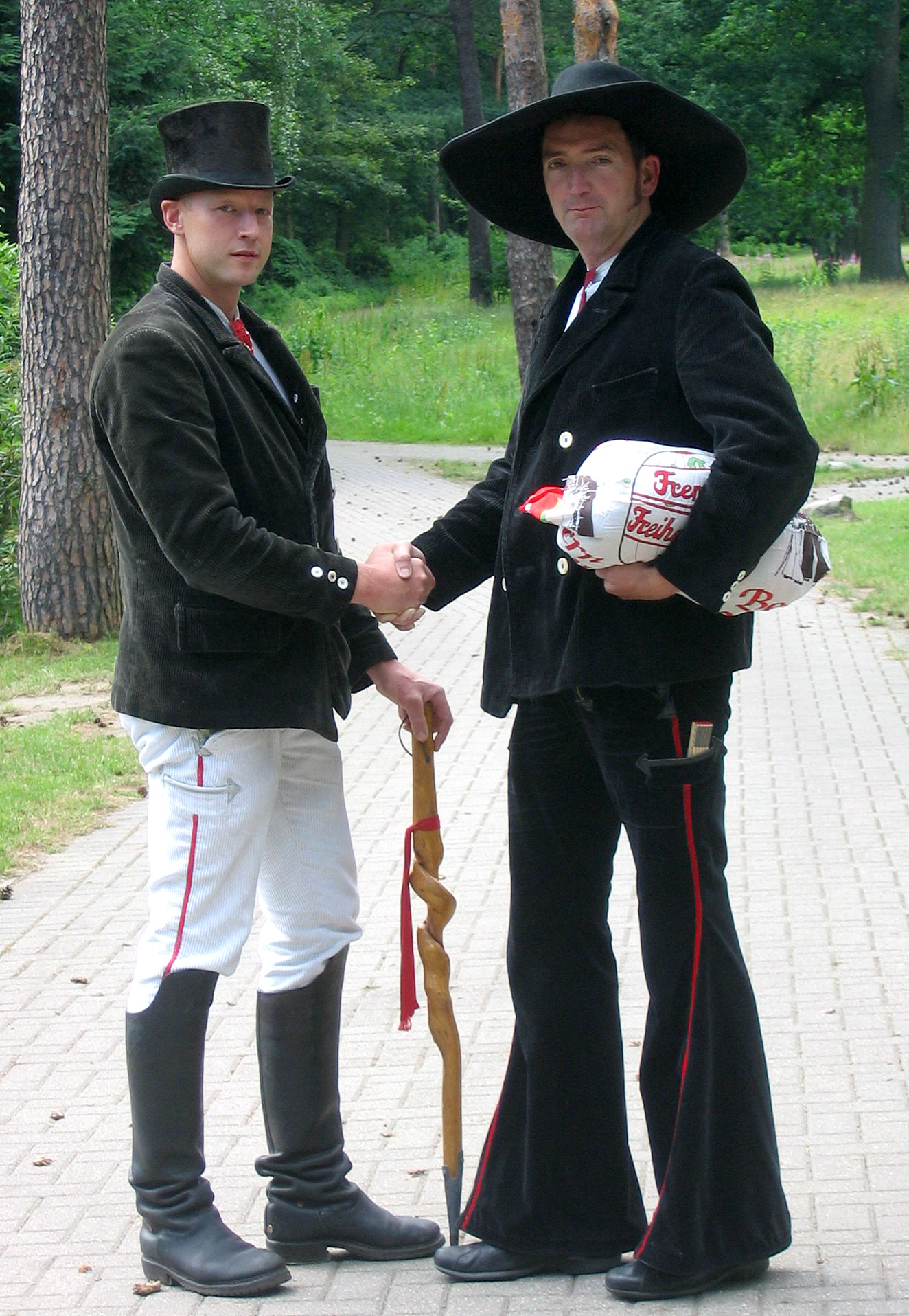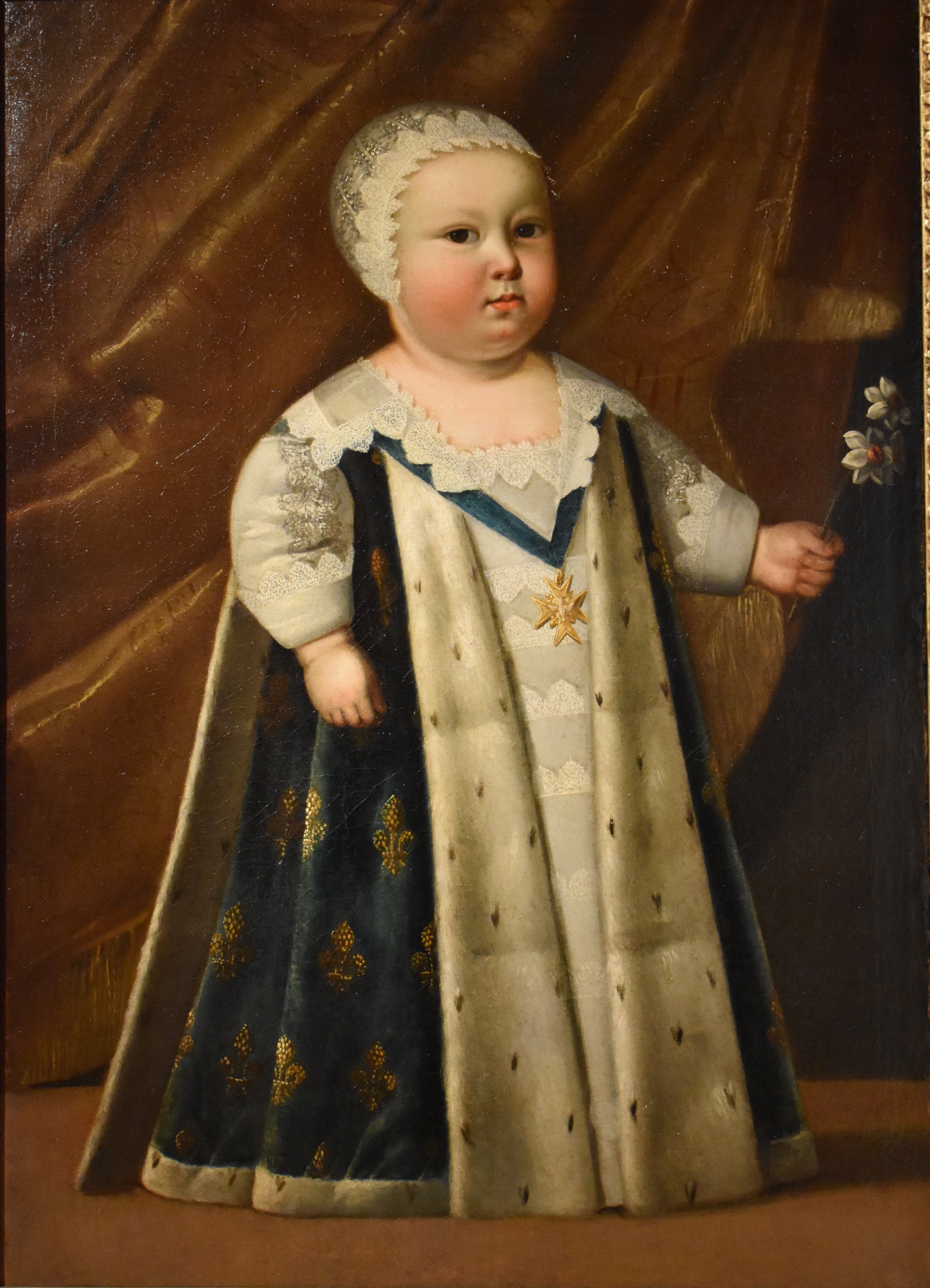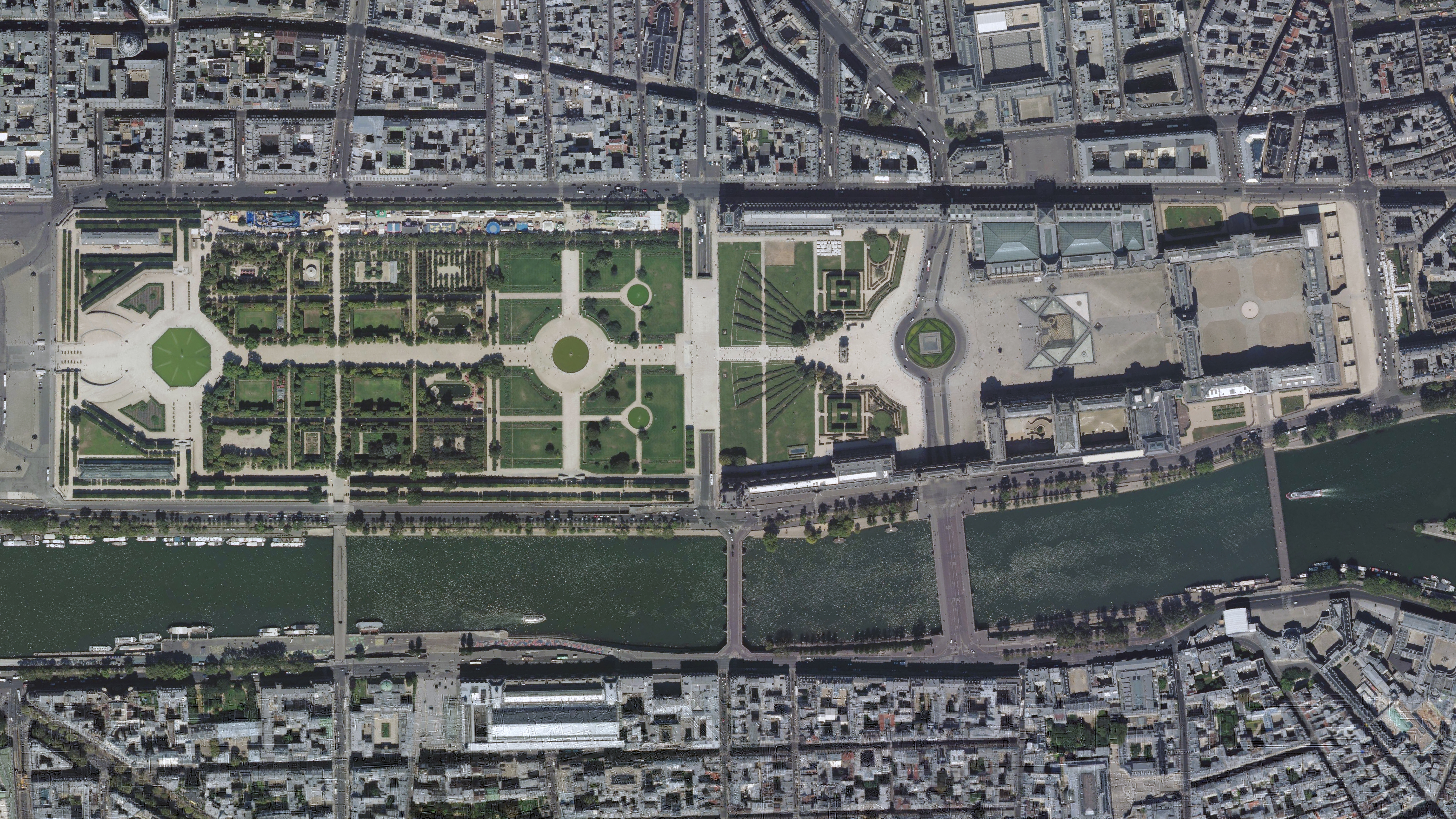|
Savonnerie Manufactory
The Savonnerie manufactory was the most prestigious European manufactory of knotted-pile carpets, enjoying its greatest period c. 1650–1685; the cachet of its name is casually applied to many knotted-pile carpets made at other centers. The manufactory had its immediate origins in a carpet manufactory established in a former soap factory (French ''savon'') on the Quai de Chaillot downstream of Paris in 1615 by Pierre DuPont, who was returning from the Levant. Under a patent (''privilège'') of eighteen years, a monopoly was granted by Louis XIII in 1627 to DuPont and his former apprentice Simon Lourdet, makers of carpets ''façon de Turquie'' ("in the manner of Turkey"). Until 1768, the products of the manufactory remained exclusively the property of the Crown, and Savonnerie carpets were among the grandest of French diplomatic gifts.The ambassadors of Russia, Spain, Denmark, Siam and even an unauthorized "ambassador" from Persia were all presented with Savonnerie carpets (Stande ... [...More Info...] [...Related Items...] OR: [Wikipedia] [Google] [Baidu] |
Tapis De Savonnerie Louis XIV Apres Charles Le Brun Pour La Grande Galerie Du Louvre
Tapis may refer to: * Tapis (Philippine clothing), a piece of cloth worn as garment or the act of putting this on * Tapis (Indonesian weaving style), a traditional style of weaving * Tapis crude, a crude oil from Malaysia * Esteban Tapis (1754-1825), Spanish missionary * ''On the tapis'', a Victorian phrase meaning 'on the table' or 'under consideration' (''tapis'' = tablecloth (fr.)) {{disambiguation, surname ... [...More Info...] [...Related Items...] OR: [Wikipedia] [Google] [Baidu] |
Anne Of Austria
Anne of Austria (french: Anne d'Autriche, italic=no, es, Ana María Mauricia, italic=no; 22 September 1601 – 20 January 1666) was an infanta of Spain who became Queen of France as the wife of King Louis XIII from their marriage in 1615 until Louis XIII died in 1643. She was also Queen of Navarre until that kingdom was annexed into the French crown in 1620. After her husband's death, Anne was regent to her son Louis XIV, during his minority, until 1651. During her regency, Cardinal Mazarin served as France's chief minister. Accounts of French court life of Anne's era emphasize her difficult marital relations with her husband, her closeness to her son, and her disapproval of her son's marital infidelity to her niece and daughter-in-law Maria Theresa. Early life Born at the in Valladolid, Spain, and baptised Ana María Mauricia, she was the eldest daughter of King Philip III of Spain and his wife Margaret of Austria. She held the titles of Infanta of Spain and of Portugal ( ... [...More Info...] [...Related Items...] OR: [Wikipedia] [Google] [Baidu] |
Robert De Cotte
Robert de Cotte (1656 – 15 July 1735) was a French architect-administrator, under whose design control of the royal buildings of France from 1699, the earliest notes presaging the Rococo style were introduced. First a pupil of Jules Hardouin-Mansart, he later became his brother-in-law and his collaborator. After Hardouin-Mansart's death, de Cotte completed his unfinished projects, notably the royal chapel at Versailles and the Grand Trianon. Biography Born in Paris, Robert de Cotte began his career as a contractor for masonry, working on important royal projects between 1682 and 1685, when he was made a member of the ''Académie royale d'architecture'' and architect of the Court, ranking third in importance after Mansart's seldom-credited assistant François Dorbay. On his return to France after a six-month sojourn in Italy (1689–1690), in the company of Jacques Gabriel, he became the director of the Manufacture des Gobelins, where not only the famous tapestries, but ... [...More Info...] [...Related Items...] OR: [Wikipedia] [Google] [Baidu] |
Bâtiments Du Roi
The Bâtiments du Roi (, "King's Buildings") was a division of the Maison du Roi ("King's Household") in France under the Ancien Régime. It was responsible for building works at the King's residences in and around Paris. History The Bâtiments du Roi was created by Henry IV of France to coordinate the building works at his royal palaces. Formerly, each palace had its own superintendent of works. Henry gave the task of supervising all works to Maximilien de Béthune, Duke of Sully. In the 17th century, the responsibilities of the Bâtiments du Roi extended beyond pure building works, to include the manufacture of tapestries and porcelain. In 1664, Jean-Baptiste Colbert was entitled ''surintendant et ordonnateur général des bâtiments, arts, tapisseries et manufactures de France'' ("superintendent and director-general of building, art, tapestries and factories of France"). This title was retained by several of his successors. Other areas that came within under the control o ... [...More Info...] [...Related Items...] OR: [Wikipedia] [Google] [Baidu] |
Académie Royale De Peinture Et De Sculpture
The Académie Royale de Peinture et de Sculpture (; en, "Royal Academy of Painting and Sculpture") was founded in 1648 in Paris, France. It was the premier art institution of France during the latter part of the Ancien Régime until it was abolished in 1793 during the French Revolution. It included most of the important painters and sculptors, maintained almost total control of teaching and exhibitions, and afforded its members preference in royal commissions. Founding In the 1640s, France's artistic life was still based on the medieval system of guilds like the Académie de Saint-Luc which had a tight grip on the professional lives of artists and artisans alike. Some artists had managed to get exemptions but these were based on favoritism rather than merit. A few "superior men" who were "real artists", suffered and felt humiliated under this system. In view of increasing pressure by the Parisian guilds for painters and sculptors to submit to their control, the young but alre ... [...More Info...] [...Related Items...] OR: [Wikipedia] [Google] [Baidu] |
Journeyman
A journeyman, journeywoman, or journeyperson is a worker, skilled in a given building trade or craft, who has successfully completed an official apprenticeship qualification. Journeymen are considered competent and authorized to work in that field as a fully qualified employee. They earn their license by education, supervised experience and examination. Although journeymen have completed a trade certificate and are allowed to work as employees, they may not yet work as self-employed master craftsmen. The term "journeyman" was originally used in the medieval trade guilds. Journeymen were paid daily and the word "journey" is derived from ''journée'', meaning "whole day" in French. Each individual guild generally recognised three ranks of workers: apprentices, journeymen, and masters. A journeyman, as a qualified tradesman could become a master and run their own business, but most continued working as employees. Guidelines were put in place to promote responsible tradesmen, who ... [...More Info...] [...Related Items...] OR: [Wikipedia] [Google] [Baidu] |
Savonnerie Carpet Detail
The Savonnerie manufactory was the most prestigious European manufactory of knotted-pile carpets, enjoying its greatest period c. 1650–1685; the cachet of its name is casually applied to many knotted-pile carpets made at other centers. The manufactory had its immediate origins in a carpet manufactory established in a former soap factory (French ''savon'') on the Quai de Chaillot downstream of Paris in 1615 by Pierre DuPont, who was returning from the Levant. Under a patent (''privilège'') of eighteen years, a monopoly was granted by Louis XIII in 1627 to DuPont and his former apprentice Simon Lourdet, makers of carpets ''façon de Turquie'' ("in the manner of Turkey"). Until 1768, the products of the manufactory remained exclusively the property of the Crown, and Savonnerie carpets were among the grandest of French diplomatic gifts.The ambassadors of Russia, Spain, Denmark, Siam and even an unauthorized "ambassador" from Persia were all presented with Savonnerie carpets (Stand ... [...More Info...] [...Related Items...] OR: [Wikipedia] [Google] [Baidu] |
Charles Le Brun
Charles Le Brun (baptised 24 February 1619 – 12 February 1690) was a French painter, physiognomist, art theorist, and a director of several art schools of his time. As court painter to Louis XIV, who declared him "the greatest French artist of all time", he was a dominant figure in 17th-century French art and much influenced by Nicolas Poussin. Biography Early life and training Born in Paris, Le Brun attracted the notice of Chancellor Séguier, who placed him at the age of eleven in the studio of Simon Vouet. He was also a pupil of François Perrier. At fifteen he received commissions from Cardinal Richelieu, in the execution of which he displayed an ability which obtained the generous commendations of Nicolas Poussin, in whose company Le Brun started for Rome in 1642. In Rome, he remained four years in the receipt of a pension due to the liberality of the chancellor. There he worked under Poussin, adapting the latter's theories of art. While in Rome, Le Brun studied anc ... [...More Info...] [...Related Items...] OR: [Wikipedia] [Google] [Baidu] |
Levée
A levee (), dike (American English), dyke (Commonwealth English), embankment, floodbank, or stop bank is a structure that is usually earthen and that often runs parallel to the course of a river in its floodplain or along low-lying coastlines. The purpose of a levee is to keep the course of rivers from changing and to protect against flooding of the area adjoining the river or coast. Levees can be naturally occurring ridge structures that form next to the bank of a river, or be an artificially constructed fill or wall that regulates water levels. Ancient civilizations in the Indus Valley, ancient Egypt, Mesopotamia and China all built levees. Today, levees can be found around the world, and failures of levees due to erosion or other causes can be major disasters. Etymology Speakers of American English (notably in the Midwest and Deep South) use the word ''levee'', from the French word (from the feminine past participle of the French verb , 'to raise'). It originated i ... [...More Info...] [...Related Items...] OR: [Wikipedia] [Google] [Baidu] |
Palace Of Versailles
The Palace of Versailles ( ; french: Château de Versailles ) is a former royal residence built by King Louis XIV located in Versailles, Yvelines, Versailles, about west of Paris, France. The palace is owned by the French Republic and since 1995 has been managed, under the direction of the Ministry of Culture (France), French Ministry of Culture, by the Public Establishment of the Palace, Museum and National Estate of Versailles. Some 15,000,000 people visit the palace, park, or gardens of Versailles every year, making it one of the most popular tourist attractions in the world. Louis XIII built a simple hunting lodge on the site of the Palace of Versailles in 1623 and replaced it with a small château in 1631–34. Louis XIV expanded the château into a palace in several phases from 1661 to 1715. It was a favorite residence for both kings, and in 1682, Louis XIV moved the seat of his court and government to Versailles, making the palace the ''de facto'' capital of France. This ... [...More Info...] [...Related Items...] OR: [Wikipedia] [Google] [Baidu] |
Louis XIV Of France
, house = Bourbon , father = Louis XIII , mother = Anne of Austria , birth_date = , birth_place = Château de Saint-Germain-en-Laye, Saint-Germain-en-Laye, France , death_date = , death_place = Palace of Versailles, Versailles, France , burial_date = 9 September 1715 , burial_place = Basilica of Saint-Denis , religion = Catholicism (Gallican Rite) , signature = Louis XIV Signature.svg Louis XIV (Louis Dieudonné; 5 September 16381 September 1715), also known as Louis the Great () or the Sun King (), was King of France from 14 May 1643 until his death in 1715. His reign of 72 years and 110 days is the longest of any sovereign in history whose date is verifiable. Although Louis XIV's France was emblematic of the age of absolutism in Europe, the King surrounded himself with a variety of significant political, military, and cultural figures, such as Bossuet, Colbert, Le Brun, Le Nôtre, Lully, Mazarin, Molière, Racine, Turenne, a ... [...More Info...] [...Related Items...] OR: [Wikipedia] [Google] [Baidu] |
Louvre
The Louvre ( ), or the Louvre Museum ( ), is the world's most-visited museum, and an historic landmark in Paris, France. It is the home of some of the best-known works of art, including the ''Mona Lisa'' and the ''Venus de Milo''. A central landmark of the city, it is located on the Right Bank of the Seine in the city's 1st arrondissement (district or ward). At any given point in time, approximately 38,000 objects from prehistory to the 21st century are being exhibited over an area of 72,735 square meters (782,910 square feet). Attendance in 2021 was 2.8 million due to the COVID-19 pandemic, up five percent from 2020, but far below pre-COVID attendance. Nonetheless, the Louvre still topped the list of most-visited art museums in the world in 2021."The Art Newspaper", 30 March 2021. The museum is housed in the Louvre Palace, originally built in the late 12th to 13th century under Philip II. Remnants of the Medieval Louvre fortress are visible in the basement ... [...More Info...] [...Related Items...] OR: [Wikipedia] [Google] [Baidu] |

.jpg)
.jpg)





